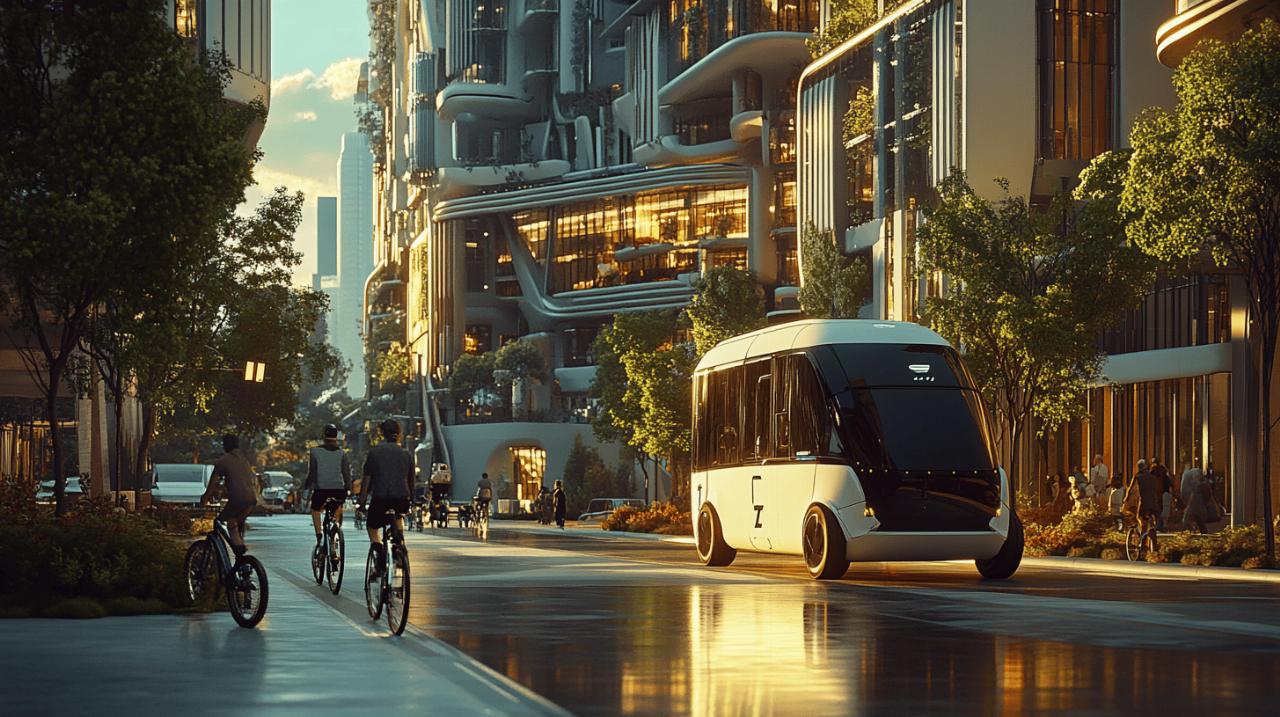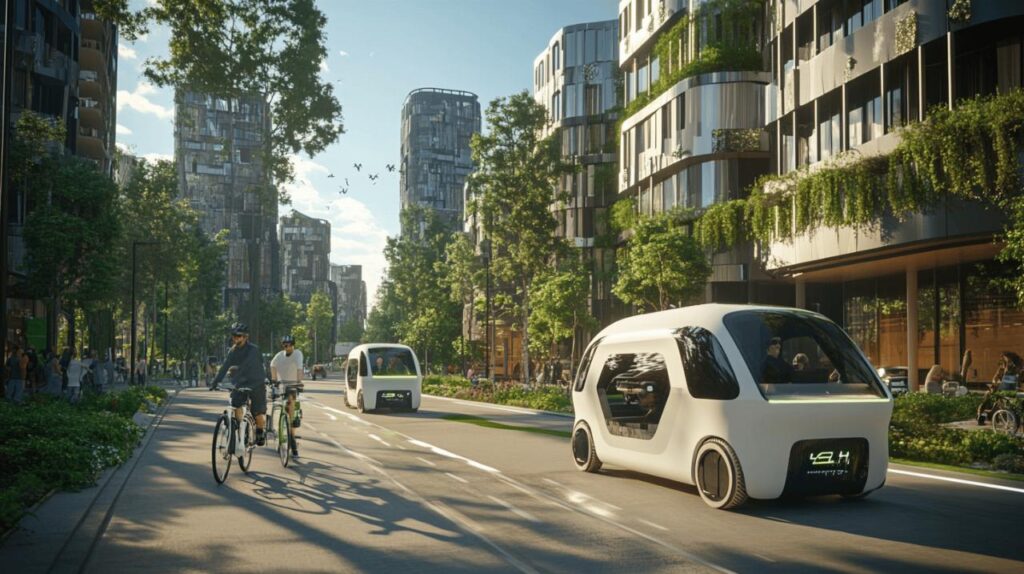The Rise of Electric Vans in Urban Logistics
The landscape of urban logistics is undergoing a significant transformation with electric vehicles (EVs) at the forefront of this revolution. As cities worldwide implement stricter emissions regulations and low-emission zones, companies are rapidly transitioning their delivery fleets to electric alternatives. This shift not only addresses environmental concerns but also offers logistical advantages in densely populated urban areas. Many logistics providers are partnering with specialist electric vehicle workshops like https://www.auto-service-feser.de/ to maintain their growing EV fleets efficiently and ensure optimal performance during daily delivery operations.
Innovative models transforming city deliveries
Electric vans specifically designed for urban deliveries have emerged as game-changers in the logistics sector. Manufacturers are developing purpose-built electric delivery vehicles with features that address the unique challenges of city operations. These vehicles offer enhanced manoeuvrability for navigating narrow streets, optimised cargo space for efficient package organisation, and zero-emission operation that allows access to restricted urban zones. The newest models incorporate modular designs that allow for customisation based on specific delivery needs, maximising operational efficiency while maintaining a minimal environmental footprint.
Cost benefits and operational advantages
The economic case for electric delivery vans continues to strengthen as technology advances and scale increases. While the initial purchase price often exceeds that of conventional vehicles, the total cost of ownership typically favours electric options over the long term. Delivery companies report significant savings on fuel costs, with electricity generally costing less per mile than diesel or petrol. Maintenance requirements are also reduced due to fewer moving parts in electric powertrains, leading to less downtime and lower service costs. Additionally, electric vans qualify for various government incentives, tax benefits, and exemptions from congestion charges in many metropolitan areas, further improving their economic proposition.
Electric cargo bikes: the last-mile revolution
Beyond electric vans, cargo bikes represent one of the most exciting developments in urban delivery. These pedal-assisted electric vehicles are proving remarkably effective for last-mile deliveries in congested city centres. With their compact profile and ability to use cycling infrastructure, electric cargo bikes can often complete deliveries faster than conventional vans in dense urban environments. Major courier services have begun integrating substantial fleets of these vehicles, particularly for parcels and small goods distribution. The combination of human power and electric assistance allows riders to transport surprisingly heavy loads while maintaining good range capabilities.
Navigating congested city streets efficiently
Electric cargo bikes excel in environments where conventional vehicles struggle. Their ability to bypass traffic jams, use cycle lanes, and access pedestrianised zones gives them a distinct advantage in congested urban areas. Delivery riders can often park directly outside destinations rather than searching for suitable parking spaces, dramatically reducing delivery time per package. This efficiency translates to more deliveries per hour and improved customer satisfaction through more precise delivery windows. Several studies have shown that in peak traffic conditions, cargo bikes can complete delivery routes up to 60% faster than vans in city centres.
Reducing carbon footprint whilst improving delivery times
The environmental benefits of electric cargo bikes extend beyond zero tailpipe emissions. Their overall carbon footprint—even considering battery production and electricity generation—is substantially lower than any motorised alternative. Each parcel delivered by cargo bike rather than a conventional van represents a significant carbon saving. Companies implementing cargo bike fleets report reductions in their logistics-related carbon emissions of up to 90% along selected routes. This environmental performance creates powerful marketing opportunities, with businesses highlighting their sustainable delivery options to appeal to eco-conscious consumers. The combination of environmental benefits with operational efficiency makes cargo bikes an increasingly attractive proposition for urban logistics planners.
Charging infrastructure development for delivery fleets
As electric delivery fleets expand, the development of appropriate charging infrastructure has become a critical focus area. Logistics companies are approaching this challenge through various strategies, including on-site charging at distribution centres, partnerships with public charging networks, and investment in dedicated fleet charging hubs. The ability to reliably recharge vehicles between shifts is essential for maintaining operational continuity and maximising vehicle utilisation. Forward-thinking organisations are incorporating charging infrastructure planning into their broader electrification strategies rather than treating it as an afterthought.
Strategic placement of urban charging networks
The optimal placement of charging facilities requires careful analysis of delivery routes, vehicle capabilities, and operational patterns. Companies are increasingly utilising sophisticated mapping tools to identify strategic locations for charging infrastructure that minimises detours and maximises efficiency. Some logistics providers are negotiating with municipal authorities and property owners to establish charging points at key locations throughout their delivery territories. This distributed approach helps mitigate range anxiety and enables more flexible routing options. As charging technology improves, with faster charging speeds and higher power delivery, the operational impact of charging stops continues to decrease.
Smart charging solutions for fleet management
Beyond physical infrastructure, intelligent charging management systems are emerging as vital components of electric delivery operations. These systems optimise charging schedules based on electricity rates, vehicle deployment plans, and grid capacity. During off-peak hours, vehicles can charge at lower rates, significantly reducing operating costs. Advanced systems can even participate in grid services, potentially generating additional revenue by making battery capacity available to the electricity grid when vehicles are not in use. This bidirectional capability represents an exciting frontier in fleet electrification, turning delivery vehicles into mobile energy assets.
Tech integration in electric delivery operations
The electrification of delivery fleets is happening alongside broader technological transformation in logistics. Companies are implementing integrated technology ecosystems that optimise every aspect of electric vehicle operations. These systems incorporate vehicle telematics, battery management, route planning, and delivery scheduling into unified platforms that maximise efficiency. The data generated by these connected electric vehicles provides unprecedented insights into operational patterns, enabling continuous improvement and refinement of delivery processes.
Ai-powered route optimisation for evs
Route optimisation for electric delivery vehicles presents unique challenges and opportunities compared to conventional fleets. Sophisticated algorithms now account for factors specific to EVs, including range limitations, charging station locations, and energy consumption patterns across different terrain and traffic conditions. Machine learning systems continuously improve route suggestions based on actual performance data, adapting to changing conditions such as weather and traffic patterns. These systems can also incorporate customer delivery preferences and time windows, balancing service quality with operational efficiency. The most advanced platforms can dynamically adjust routes in real-time as conditions change during the delivery day.
Battery management systems maximising range
Effective battery management is crucial for maximising the operational range of electric delivery vehicles. Modern fleet management systems incorporate detailed battery monitoring that tracks performance, predicts range accurately, and helps prevent premature battery degradation. Drivers receive guidance on efficient driving techniques that conserve energy, such as optimal acceleration patterns and regenerative braking usage. Some systems even adjust climate control and auxiliary systems automatically to extend range when needed. This comprehensive approach to energy management helps delivery companies extract maximum value from their electric vehicle investments while ensuring service reliability.
Emerging drone and autonomous ev deliveries
Looking further into the future, autonomous electric vehicles and drones represent the next frontier in urban delivery innovation. Several companies are conducting extensive trials of self-driving delivery pods that navigate city streets independently. These compact electric vehicles are purpose-designed for package delivery, with secure compartments that can be accessed by recipients using unique codes or smartphone authentication. Similarly, electric delivery drones are progressing from experimental concepts to commercial reality in some markets, offering ultra-fast delivery for small packages while bypassing ground-level congestion entirely.
Regulatory progress and commercial applications
The regulatory landscape for autonomous and drone deliveries is evolving rapidly, with frameworks being established to enable commercial operations while ensuring public safety. Some jurisdictions have created specialised testing zones where companies can operate under controlled conditions to demonstrate safety and reliability. The most progressive cities are developing comprehensive plans for integrating these new delivery methods into existing urban infrastructure and transportation systems. As regulatory clarity improves, commercial applications are expanding beyond pilot projects to include regular service in selected areas. These early deployments provide valuable data for refining both the technology and regulatory approaches.
Future Prospects for Airborne and Self-Driving Deliveries
The combination of electric propulsion with autonomous operation presents compelling advantages for urban logistics. These systems promise substantial reductions in delivery costs while improving speed and reliability. Electric delivery drones can potentially serve locations that are difficult to access by road, while autonomous ground vehicles can operate continuously without driver hour limitations. The environmental benefits are also significant, with zero-emission operation and optimised routing reducing the overall ecological footprint of delivery operations. While widespread deployment faces technological and regulatory hurdles, the direction of development is clear, with substantial investment flowing into these innovative delivery solutions.
Consumer demand driving sustainable delivery options
Ultimately, the transition to electric urban deliveries is being accelerated by changing consumer expectations. Research consistently shows that consumers—particularly younger demographics—increasingly consider environmental impact when choosing where to shop. Companies that can offer sustainable delivery options gain a competitive advantage in these segments. This consumer preference is creating market pull that complements the regulatory push towards cleaner delivery methods. Forward-thinking retailers and logistics providers are recognising this shift and positioning themselves accordingly, highlighting their green credentials in marketing communications.
Brand loyalty through green delivery credentials
For many consumers, the delivery experience has become an extension of the brand experience. Companies that offer electric vehicle deliveries can differentiate themselves in a crowded marketplace and build stronger brand loyalty. Some retailers now prominently feature their sustainable delivery options at checkout, allowing consumers to make environmentally conscious choices. The visual distinctiveness of electric delivery vehicles also serves as mobile advertising for a company’s environmental commitments. This alignment of operational practices with consumer values creates authentic sustainability narratives that resonate in increasingly eco-conscious markets.
The commercial value of emission-free deliveries
Beyond brand perception, there are tangible commercial benefits to emission-free deliveries. Companies with electric fleets report improved access to urban areas with traffic restrictions, enabling them to serve customers in locations where conventional vehicles face limitations or additional costs. The quieter operation of electric vehicles also allows for extended delivery hours in noise-sensitive areas, expanding the operational window. For premium services, the ability to offer zero-emission delivery can support price differentiation and higher margins. As consumers increasingly factor environmental impact into their purchasing decisions, the commercial case for electric urban deliveries continues to strengthen, creating a virtuous cycle of adoption and innovation.

